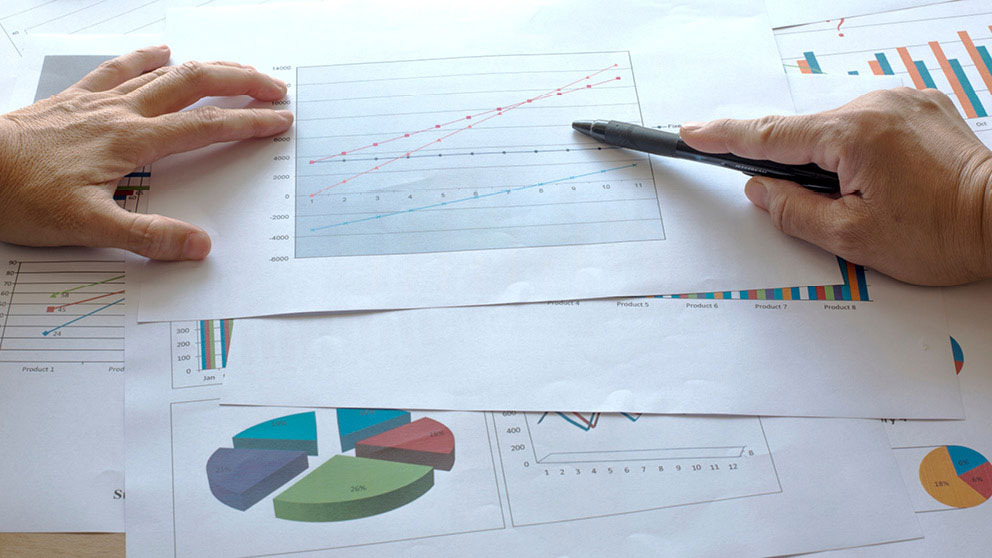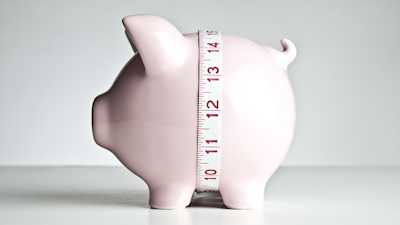Using statements and ratios to assess financial success

Business Essentials was created to build your knowledge of core Money & Finance topics. Check out the entire series!
“When I want to know how my farm is doing financially, I just check my bank account.” Accountants and lenders shake their heads when they hear this sort of statement. While it’s important to monitor your bank balance, it provides limited information on how your farm is performing financially.
Financial statements
To make informed decisions, you need these three commonly-used financial statements – the income statement (profit and loss), balance sheet and cash flow statement.
Income statement:
Shows revenues and expenses over a specific time
Bottom line is the net income for the business
Accounts for depreciation, receivables, payables and inventory changes (accrual basis)
Used to assess profitability
Cash in the bank doesn’t tell you if the operation was profitable in the past fiscal period. Only an income statement can tell you that.
Balance sheet:
Displays the company’s assets, liabilities and shareholders’ equity
Assets = Liabilities + Shareholders' Equity
Snapshot of financial position at a specific point
Cash in the bank is just one element of your asset base. It doesn’t tell you anything about the farm’s liabilities.
Cash flow statement:
Shows the net change in cash position over a specific period
Adjusts for non-cash expenses such as depreciation
A cash flow statement shows what occurred and can inform your cash flow budgets as you project into the future. On its own, your bank balance doesn’t have much value if you don’t account for upcoming expenses and revenues.
Note: Information from the balance sheet and the income statement is needed to create the cash flow statement. Accounting software programs like AgExpert Accounting can automatically generate financial statements.
Ready to dive deeper into financial statements? Sign up for Manage Your Farm Finances, a free course series designed to help you build the skills you need to manage your farm finances with confidence.
Financial ratios
With the information collected from financial statements, you can calculate financial ratios for a deeper dive into your financial situation. Ratios can also help you pinpoint opportunities and challenges.
Current Ratio
The current ratio (also known as liquidity) calculates your ability to meet financial obligations as they come due.
Current Ratio = Current Assets / Current Liabilities
Current assets are short-term liquid assets that can reasonably be converted to cash in a year. Current liabilities are expenses and payments due within the year.
A ratio above 1.5 is considered ideal. Higher suggests your money could be working harder. Lower than 1.0 means a farm lacks the current assets to cover short term liabilities and would require additional cash either through a cash injection or other financing.
You can use your current ratio to compare against others in your sector. More importantly, you can track your current ratio over time to better understand changes in your operation. If your current ratio is declining, it’s a sign expenses are growing faster than revenues.
It’s also important to use a cash flow budget to track the timing of cash inflow and outflow. Even with a strong current ratio, issues arise if you don’t plan. For example, a cash crop producer spends a lot of money on inputs before any crop is available for sale. The current ratio for the year may look good, but a cash flow budget will show if a cash crunch might be looming.
Accrual vs. cash accounting
For ratios that involve income and expenses, it’s important to use information from an accrual system of accounting rather than a cash basis.
In cash accounting, you record income or expense only when cash is received or paid. Inventory is not included. Farmers can use the cash basis for filing income tax. For instance, an unsold crop doesn’t have to be considered income and purchased inputs can be used as an expense even if they are for next year’s growing season.
With accrual accounting, you record income and expenses when a sale or purchase is made, even if the money hasn't changed hands. Changes in value of all inventories, including livestock, crops and purchased inputs, form part of the income calculation. The actual income and expenses for the production year are matched to provide proper information for financial planning.
The accrual accounting system is the basis of support under the AgriStability business risk management program as well as some private revenue insurance offerings.
Debt service coverage ratio
The debt service coverage ratio (DSCR) is a similar calculation to the current ratio - it measures an operation’s ability to service debt. It’s one of the first indicators a lender will examine when you’re looking to borrow more money.
DSCR = Net Income Available for Debt Servicing / Debt Service
The net income available for debt servicing is, net farm income after taxes + term interest + depreciation – drawings (living expenses). Or, dividends + net off-farm income. Depreciation (or capital cost allowance) is added back in because it isn’t a cash cost.
Debt service includes all debt obligations due in a year, including short-term debt and the current portion of long-term debt that will be due, including interest.
As with the current ratio, a DSCR of 1.5 is considered healthy, while a ratio below 1.0 indicates a difficulty in servicing debt. Remember, cash is king, and a cash flow budget is important even with a healthy current ratio or debt service coverage ratio.
Debt-to-asset and debt-to-equity ratios
While the current ratio and the debt service coverage ratio measure liquidity, the debt-to-asset ratio measures solvency and the ability for an operation to meet long-term financial obligations.
Debt-to-Assets Ratio = Total Liabilities / Total Assets
Note that total liabilities include long-term debt for equipment, vehicles, farmland and quota, as well as short-term liabilities such as a line of credit, operating loan and unpaid invoices and credit card balances.
Total assets included fixed assets such as farmland, buildings and equipment as well as current assets.
The debt-to-asset ratio indicates the amount of debt for each dollar of assets. Although financial advisor’s views may differ slightly, a ratio of less than 0.25 is strong, between 0.25 and 0.40 is satisfactory, and more than 0.40 is weak (highly leveraged).
Other ratios are often used to express the same information in different ways. For instance, the debt-to-equity ratio is total farm liabilities divided by total farm equity. In this case, a ratio of less than 0.4 is strong, with 0.40 to 1.0 as satisfactory and more than 1.0 as weak.
Example:
If a farm’s total assets are worth $1 million and the total debt is $300,000, the equity is $700,000.
The debt-to-asset ratio is $300,000, divided by $1 million, which is 0.30 and considered satisfactory.
The debt-to-equity ratio is $300,000 divided by $700,000, which is 0.43, which again is satisfactory.
When you hear a business is highly leveraged, it has high debt relative to its equity. For instance, if the leverage of your farm is 2.0, it means creditors have invested $2 in your business for every $1 that you have. Generally, lenders aren’t comfortable adding more debt to an already highly leveraged business. They risk losing more than the owner if the business failed. But, if your leverage is low, you have strong equity and will have more financing options for new opportunities.
Operating expense ratio
The operating expense ratio (OER) measures an operation’s variable costs relative to its gross revenue.
OER = Total Operating Expenses / Gross Revenue
Operating expenses are variable costs such as labour, feed, crop protection products, fuel, maintenance, insurance and repairs. Loan payments, depreciation, property taxes, land rent expense and capital improvements are not included in operating expenses.
If your OER is 60%, it indicates that you’re spending 60% of revenue on variable expenses – 60 cents out of every dollar. If your OER is too high, it reduces the revenue available to cover fixed costs and build equity.
Different sectors within agriculture typically have different OERs. This ratio is best used to capture what’s happening in an operation over several years. The OER increases when expenses rise more rapidly than income. The ratio should be used in conjunction with other ratios to accurately assess overall financial health.
Reducing total operating expenses without damaging gross income improves a farm’s efficiency. There are many ways to do this, but it takes proactive management and attention to detail. Some examples include doing more of your equipment repairs and buying fertilizer well in advance of seeding when prices are usually lower.
Return-on-Assets Ratio
The Return-On-Assets ratio (ROA) is a measure of farm profitability relative to total assets. The higher your ratio, the better you are leveraging assets to turn a profit. While there’s no ideal ROA, a higher ROA makes it easier to service debt.
ROA = Net income / Total assets
Considerations when using ratios
Different ratios can be used to calculate and assess your farm’s financial situation and have a place in decision making. However, year-to-year comparisons should be made for similar timeframes, typically at the end of the fiscal year.
Don’t use ratios in isolation. Your current ratio might look strong because your liabilities are low, but your working capital (current assets - current liabilities) might be minimal.
Ratios don’t pay the bills - dollars do.
Ready to get a clear look at your farm’s financial picture? Here are five things you can do to get started.
Sign up for the Manage Your Farm Finances course series to build your financial management skills.
Collect information from your income tax returns, financial documents, AgExpert software and other records
Calculate ratios for previous comparable time periods
Talk to your financial advisor, accountant or lender about using ratios as a tool for analysis
Use FCC financial ratio calculators to make the process easier.

Every farm has a different tolerance for financial risk. Learn how to determine yours and about programs to help you manage it.
